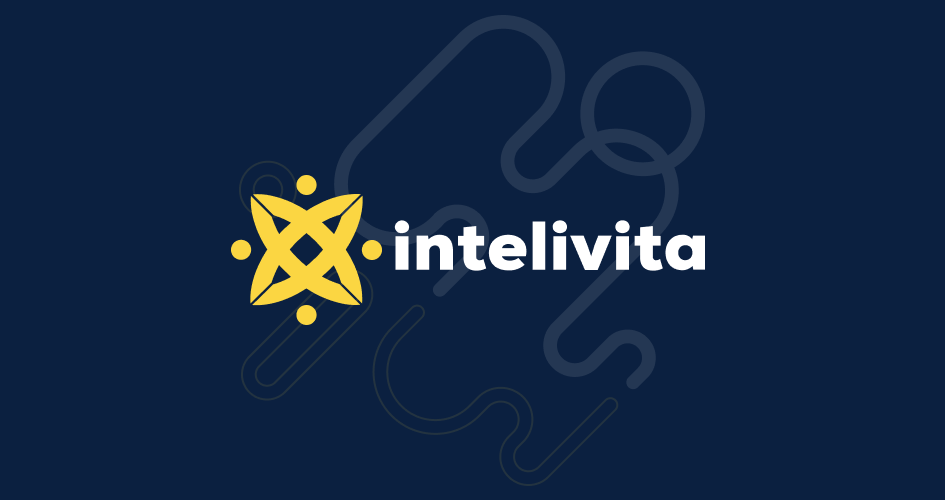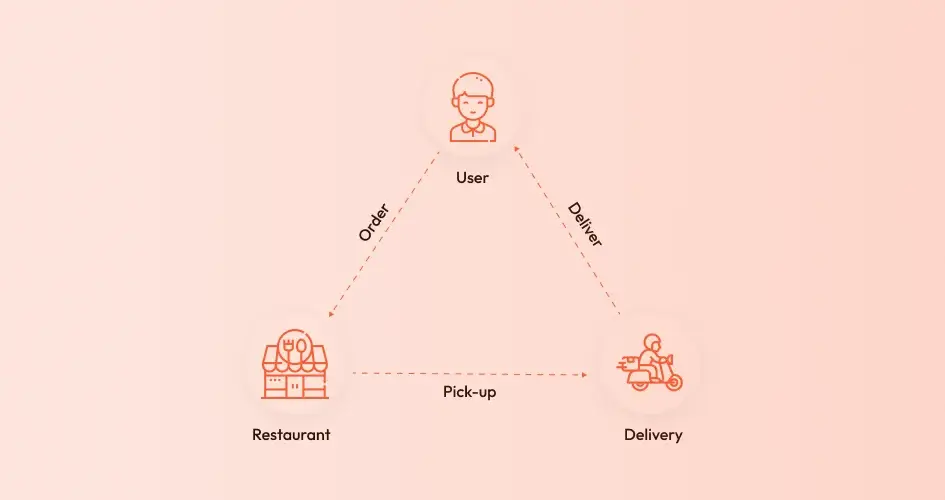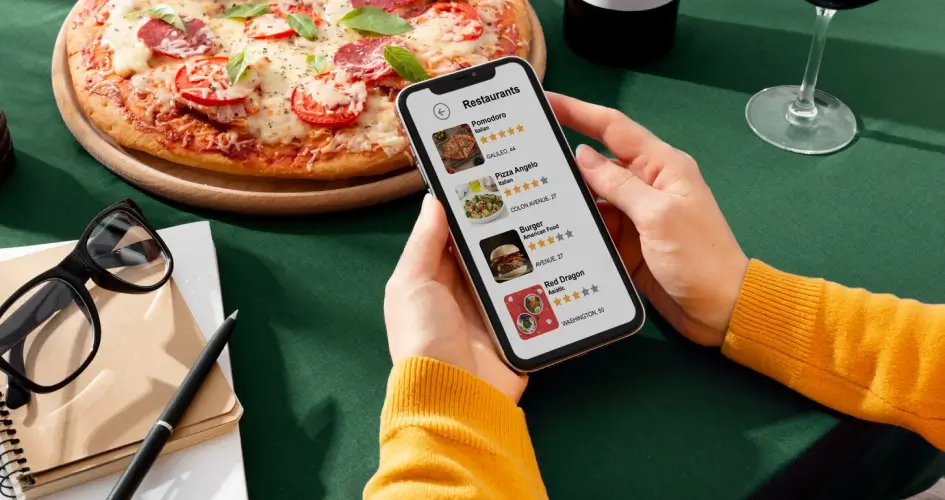Are you a food delivery business owner, startup founder, or entrepreneur?
Do you need help choosing the right platform for your food delivery business? – if so, continue reading.
In this blog, we help you pick the appropriate platform between web and mobile app for your food delivery business by discussing the following aspects:
- What is mobile app development in the food delivery business?
- What is web app development in the food delivery business?
- Difference between mobile app and web app.
- When to develop a mobile app for a food delivery business?
- When to create a web app for a food delivery business?
- Types of mobile and web food delivery apps.
This article aims to provide you with valuable insights and help you choose the platform that fits your business needs and requirements.
We’re a leading food delivery app development company with a track record of creating over 25+ mobile and web apps; we know the challenges you face while picking the platform for your food delivery business.
But going through this blog, you find the solution for your challenges.
So, let’s get started.
What is Mobile App Development in the Food Delivery Business?
Mobile app development in the food delivery business is creating and building software applications specifically designed for smartphones and tablets.
The software applications are developed to run on popular operating systems like iOS (Apple) and Android.
That helps users browse restaurant menus, place orders, make payments, and track the status of their food deliveries, all from the convenience of their mobile devices.
Examples of online food delivery mobile applications are Grubhub, Uber Eats, DoorDash, and Instacart.
Further, suppose you want to develop an online food delivery app. In that case, refer to our guide on how to create a food delivery app that will help you with a complete guide to developing a mobile app for the food delivery business.
What is Web App Development in the Food Delivery Business?
The web application, also known as a website in the food delivery business, creates a software application accessible via web browsers on desktops, computers, and laptops.
Online food delivery websites are specially developed and designed to facilitate and streamline ordering food online.
The famous examples of online food delivery web apps are Eat, Domino, Pizza Hut, and Deliveroo.
After knowing the definition of mobile and web apps in the food delivery business, let us move to the next section, where we differentiate web and mobile apps to help you choose the right platform for your business.
Let us dive in.
Web Vs. Mobile App in Food Delivery Business: 10 Key Differences
The table helps you to find the key difference between mobile apps and web apps in food delivery that assist you in making informed decisions for your online food transportation businesses.
Let’s check out:
| Aspect | Web App | Mobile App |
| Platform | Accessible via web browsers on various devices (desktop, laptop, mobile). | Developed for specific mobile platforms, such as iOS and Android, for optimal performance and integration. |
| Technologies Used | Primarily HTML, CSS, JavaScript, and web development frameworks. | Utilizes platform-specific programming languages, such as Swift (iOS) and Java/Kotlin (Android), along with web technologies. |
| Accessibility | Offers broad accessibility as users can access the app via any web browser on various devices. | Provides a more immersive and specialized experience, optimized for mobile device interactions. |
| Performance | May exhibit slower performance compared to native mobile apps due to web-based rendering and network dependencies. | Typically offers faster and smoother performance, leveraging the device’s native capabilities and hardware. |
| UI/UX Design | Responsive web design adapts to different screen sizes and orientations, but may have limitations in UI consistency. | Offers a tailored and consistent user interface and user experience, optimized for mobile touchscreens. |
| Updates | Updates can be deployed instantly to all users when changes are made to the web app. | Updates require approval from app stores (e.g., Apple App Store, Google Play) and may involve user downloads, which can lead to delays in updates. |
| Offline Access | Typically requires an internet connection to access the app and place orders. | Some mobile apps offer limited offline functionality, such as viewing menus or tracking past orders, enhancing user convenience in areas with spotty connectivity. |
| Cost of Development | Generally, web app development is cost-effective as it involves a single codebase for cross-platform access. | Can be more expensive due to the need to develop separate versions for iOS and Android, but offers a higher degree of optimization. |
| Push Notifications | Lacks the ability to send push notifications directly to users. | Can send push notifications to engage users with promotions, order updates, and reminders, enhancing user engagement. |
| Development Time | Typically requires less development time and resources due to cross-platform compatibility. | May require more development time and effort due to platform-specific development and testing for iOS and Android. |
So, here we conclude the critical differences between mobile and web applications in food delivery apps.
Further, to streamline your pick between two digital platforms, let us discuss when to build mobile or web apps for your food delivery business.
Let’s delve in.
Let us help you develop your online food delivery app using the right platform align with your business needs and requirements.
When To Build A Mobile App for Your Food Delivery Business?
It would help if you considered developing a web app for your food delivery business when:
- You want to effectively increase customer engagement with your brand through push notifications, personalized promotions, and loyalty points and programs.
- You want to offer a seamless and optimized ordering process, leveraging mobile-specific features.
- You have the resources to invest in app development and want to scale your business.
- To stay ahead in a competitive market, a mobile app can give you an edge.
- For improved functionality, you must utilize device capabilities like GPS, delivery tracking, camera, and biometrics.
- You are committed to the long-term growth of your food delivery business and recognize the importance of an online ordering system.
- You want to implement secure in-app payment solutions, such as digital wallets and one-click ordering, making the payment process quicker and more convenient.
- You want to incorporate the latest technologies like AR/VR, AI, and machine learning to enhance user experience.
- To assist delivery drivers with AR navigation features, ensuring timely and accurate deliveries.
- To enable users to place orders through voice commands or smart home devices, offering a futuristic and convenient ordering experience.
When To Build A Web App for Your Food Delivery Business?
It would help if you considered building a mobile app for your food delivery business when:
- You are early in the online food ordering business and want to test the concept with a more cost-effective solution.
- You aim to reach a wider audience, including those who may want to avoid downloading a mobile app.
- You need to get your service up and running rapidly without the complexities of app store approvals and separate platform development.
- Your budget and resources are limited, and you want a more cost-effective way to offer online food ordering.
- To provide a consistent and user-friendly experience across different screen sizes and orientations.
- You want to enhance your online presence and search engine optimization (SEO) to attract potential customers.
After discussing when to develop web and mobile for your restaurant business, let us move to the next section, which is the types of web and mobile food ordering apps.
Discussing types of mobile and web apps will help you make precise decisions on picking the right platform for your food delivery business. Let’s check it out.
Types of Food Delivery Mobile Apps
Here are the three major types of mobile apps for online food ordering:
| Type of App | Description | Target Audience | Example |
| Online Food Delivery App | Aggregator apps offer diverse restaurant menus in one platform for customers to choose from a wide range of cuisines and order food online. |
|
|
| Restaurant Mobile App | Apps designed for restaurant owners and managers to manage their menus, track orders, and monitor business analytics. |
|
|
| Farm-to-Table Apps | These platforms connect consumers directly with local farmers and producers for sourcing fresh and sustainable food. |
|
|
Types of Online Ordering Web Apps
Here are the three major types of web apps for online food ordering:
| Type of App | Description | Target Audience | Example |
| Online Ordering Platform | These web apps provide a platform for customers to browse restaurant menus, place orders, and make payments for food deliveries or takeout. |
|
|
| Reservation and Booking Platform | Web apps for making restaurant reservations, particularly in fine dining and sit-down establishments. |
|
|
| Meal Planning and Recipe Apps | Apps that help users plan meals, generate shopping lists, and discover new recipes. |
|
|
Still Confused Between Mobile App And Web App?
Let us help you choose the right platform for your food delivery business. We are an experienced software development company crafting various apps in diverse fields.
Our highly skilled and professionally trained app development team is dedicated to ensuring that your online food delivery app meets and even exceeds your expectations.
Our extensive experience, having successfully developed over 160+ different types apps, equips us to guide you in making the informed choice between mobile and web app development for your business.
Connect with our expert today and share your idea to convert it into reality.





